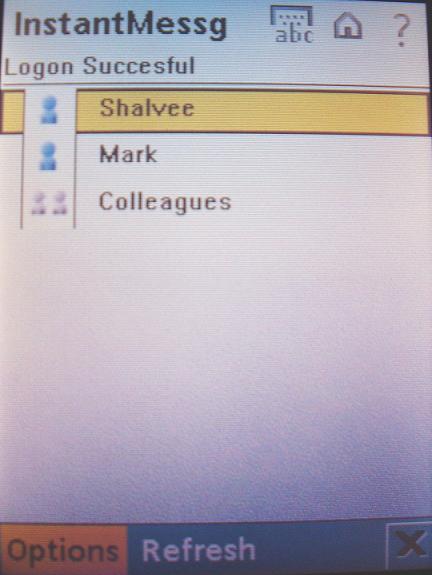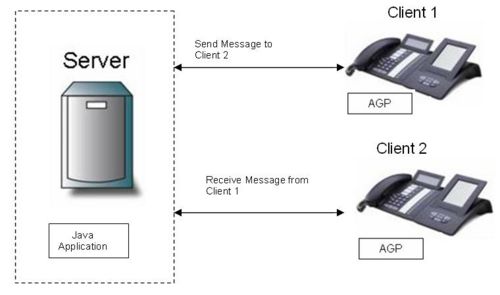Difference between revisions of "Instant Messenger"
The Wiki of Unify contains information on clients and devices, communications systems and unified communications. - Unify GmbH & Co. KG is a Trademark Licensee of Siemens AG.
| Line 1: | Line 1: | ||
| + | [[Image:Instant Messenger.JPG]] | ||
== Scope == | == Scope == | ||
Until recent times Instant Messenger functionality has been limited to PC and desktops only. By utilising the capabilities of the AGP and Instant Messenger applications we can now provide a significant amount of functionality on the OptiPoint Series phones via the DSM or APM. Instant messenger requires all the users to get connected to common web server with Instant Messaging Application on it. Whenever a person logins he is added into the contact list maintained by web server and is visible to others. | Until recent times Instant Messenger functionality has been limited to PC and desktops only. By utilising the capabilities of the AGP and Instant Messenger applications we can now provide a significant amount of functionality on the OptiPoint Series phones via the DSM or APM. Instant messenger requires all the users to get connected to common web server with Instant Messaging Application on it. Whenever a person logins he is added into the contact list maintained by web server and is visible to others. | ||
Revision as of 15:54, 27 November 2006
Scope
Until recent times Instant Messenger functionality has been limited to PC and desktops only. By utilising the capabilities of the AGP and Instant Messenger applications we can now provide a significant amount of functionality on the OptiPoint Series phones via the DSM or APM. Instant messenger requires all the users to get connected to common web server with Instant Messaging Application on it. Whenever a person logins he is added into the contact list maintained by web server and is visible to others.
Operation
Operational Overview:
- Client 1 writes a message on the Instant Messenger application running on the phone’s AGP
- When the send button is pressed, the message, along with other parameters including username of message recipient, forms part of a HTTP request and is sent to the servlet running on the server
- The servlet processes the request and stores the recipient’s username along with the message
- During processing the servlet constructs an XML page containing the message and sends a push request to Client 2 telling it that a message awaits collection.
- Client 2 then contacts the servlet in order to receive the message in XML form.
- The XML page received replaces the page currently showing on the DSM/APM to display the message






